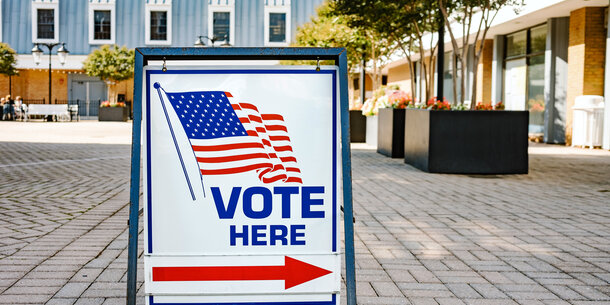On June 25, 2013, the Supreme Court hollowed out a key provision of the Voting Rights Act, ushering in a decade of racial discrimination and vote suppression that unleveled the playing field for voters of color. In Shelby County v. Holder, the conservative majority effectively dismantled Section 5 of the landmark civil rights legislation, which required federal approval for any changes to election-related procedures in parts of the country with a history of racial discrimination in voting.
Without this “preclearance” regime, the revival of discriminatory tactics was immediate: in the last 10 years, at least 29 states have passed 94 laws that make it more difficult to vote, particularly for communities of color.
The Brennan Center’s Dr. Kareem Crayton, senior director for voting and representation, discussed the significance of the ruling on its 10th anniversary, the state of voting rights in its aftermath, and why there is still reason to be hopeful.
What stood out to you most from the Shelby County v. Holder ruling?
I think the decision itself was infuriating to read as a person who grew up in the South and who has witnessed firsthand the region’s transformation because of the Voting Rights Act.
The state of Alabama, the state whose violent resistance to respect the right to vote led Congress to pass the Voting Rights Act, suddenly shows up before the Supreme Court as this belabored entity that has just trying its best to follow the law amidst federal burden and oversight. That story is quite detached from reality, and the Court bought it.
The Court ignored the very point of Section 5, which was ending state resistance that had disregarded the dignity of people since the Reconstruction. That project was underway, and the Court cut it short on a theory focused on state dignity. Voting is about the interests of people, not about those of states. And I continue to be disappointed that this Court chose the dignity of states over people in deciding to effectively end Section 5.
Shortly after the decision, your home state of Alabama was quick to enforce a photo ID law that had previously been barred under Section 5 preclearance. Other states followed with restrictive voting rules. In Alabama and across the country, how do you think voting rights has changed in the last decade?
In the time that Shelby County has been on the books, we’ve seen a growing gap in the turnout of nonwhite voters compared to white voters, in Alabama and several other places. It’s evidence that these new laws rushed on the books have made it harder for communities that had been protected by Section 5 to register, vote, and stay on the rolls. The impact of Shelby County has been a rollback of a lot of the improved participation in the South due to the enforcement of Section 5 of the Voting Rights Act.
The Supreme Court did not do further harm to the Voting Rights Act in its decision this month in Milligan v. Allen. That was a stark departure from a nearly unbroken 10-year record of devastating rulings like Shelby County. Do you think the Court is still a threat?
I think the threat is a way of thinking on the Court that masquerades as legal reasoning. There is sadly a mentality gripping this Court that places the concerns of states and elected officials ahead of the concerns of voters, particularly people with a history of being marginalized by these states. This wrongheaded mentality sadly represents a majority on this Court, and it is a threat to reaching the full enjoyment of the franchise. I celebrate the fact that Milligan wasn’t the calamity that many of us came to fear, but the mentality on this Court remains a clear and present danger.
We are still living in a world without Section 5. We’re also living in a world with a severely limited Section 2, which was weakened by the Court two years ago in Brnovich v. Democratic National Committee. Those changes have made it harder to bring legal challenges against restrictive voting laws, even as the needs for litigation have grown.
At this moment, what is the most urgent need in the fight for voting rights?
Right now, we desperately need legislation that makes clear both to the Court and to states that want to run wild with voting discrimination that the federal commitment to protecting the right to vote — and to expanding opportunity for all Americans to participate meaningfully in elections — is real. Bills like the Freedom to Vote Act the John Lewis Voting Rights Advancement Act need to be on the books.
Our country is getting more and more diverse at the same time it is also seeing major challenges to the right to vote. We need to make sure the Constitution’s promise of a right to participate in elections that’s also free from discrimination is a reality.
On this anniversary, why should the pro-democracy movement still be hopeful?
We have to be hopeful because we know we live in a country where challenges have always confronted people who take the promise of equality seriously and who want to expand opportunity. Pursing that goal is never easy to do, especially with the headwinds we face with the ongoing assault on voting rights. But the Americans who marched over the Edmund Pettus Bridge in 1965 succeeded under even more difficult circumstances.
We have a critical chance at this moment to show ourselves and the world what it means to have a truly vibrant and multiracial and multiethnic democracy. It’s our opportunity to shape the country we want to see, and we are blessed with a lot of sophisticated tools and smart people doing that work.




